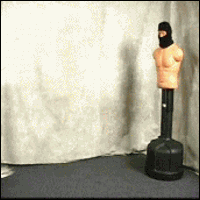Communication Lessons from the Martial Arts
- Tony Angus
- Jan 10, 2020
- 3 min read
In the martial art, Kenpo 5.0, we talk about 3 phases of learning, being the Ideal Phase, The What-If Phase and the Formulation Phase. These refer to the order in which we learn the science of movement. In the Ideal Phase we practice certain moves against certain set attacks. This teaches us to develop the ability to recognise the shape and texture of the attack – how a body moves within space and time – and the skills required to combat that type of attack.
The Ideal Phase includes most of the most common forms of assault, from wild, swinging haymakers to neat one-two combinations; from rear naked chokes and hammerlocks (arm jammed up your back) to club and knife attacks; from tackles and takedown attempts to multiple opponents at one time.
The What-If Phase then asks questions like, “But, what if the attacker does not step forward with his right foot? What if he steps with his left? What if he grabs the lapel with his left hand before throwing the right?” etc. In this phase we learn to discuss the ways in which attacks can vary and learn to spot those variations quickly and make the necessary and appropriate adjustments on the fly. This brings us closer to our goal of spontaneous, unhindered motion.
The Formulation Phase uses the application of certain principles against the What-If questions. We ask things like; can we amend the target, adjust the weapons, rearrange the action, insert or delete a movement? Can we alter our angle and trajectory or modify our timing to suit the new circumstances? Then we explore the outcomes and practice those that appear effective.
So, how does this have anything to do with communication?
(Perhaps you’ve already seen where I’m going with this.) Many communication courses teach strategies for use against certain hostile verbal exchanges (The Ideal Phase), but much of communication breaks down after the first engagement, where you have tried your best “technique” and it has not achieved the result you thought it would. Now you’re floundering, wondering how to follow up.
This is where the What-If and Formulation Phases can help.
Firstly, consider the ways in which a person might respond to your comments. What if they interrupt you and not let you finish? What if they throw your words back in your face? What if they say something along the lines of, “Don’t bother using your conflict management strategies on me!”? Now, consider some potential follow up statements to suit these new circumstances. Then check your success, rinse and repeat.
Using The Formulation Phase as the example, can you alter your angle (e.g. move the focus onto another aspect of the situation) or adjust the weapon (e.g. change your tone or pitch or volume)? Can you modify your timing or insert a manoeuvre (e.g. use modifying expressions or positive reframing)? I’m sure you can come up with plenty more. So, practice these.
We already know that there are communication strategies that are instant fails in today’s world. In the martial arts world these are akin to cocking your hand at your hip when blocking or striking with the other hand. For example, telling someone to calm down when they are upset will very rarely succeed, as everyone now knows. Once we minimise the use of these inevitable fails we can further increase our chances of success by developing a What-If mindset and building our skills based upon Formulation.
Try looking at your communication training in terms of the Ideal, What-If and Formulation Phases and see how training these makes a difference. And let me know how you go!! :)



































Comments